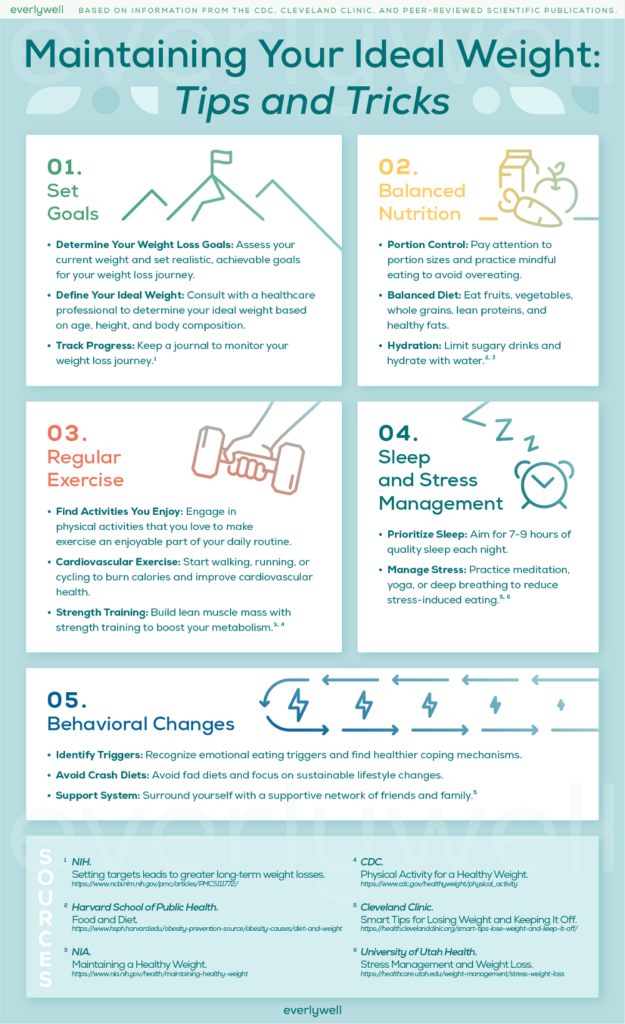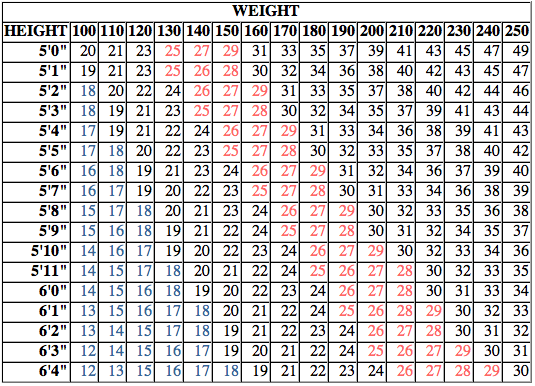A free BMI calculator is a helpful tool for quickly assessing your body mass index.. It gives us a quick way to check if our weight is healthy for our height.
Calculating your BMI can be the first step in creating a weight loss plan that works for you.

Losing weight based on BMI isn’t just about looking good. It’s about improving our health and feeling better. When we aim for a healthy BMI, we reduce our risk of many health problems.
This can lead to a longer, more active life.
We can use BMI to track our progress as we lose weight. It helps us see how far we’ve come and how much further we need to go.
By setting a target BMI, we give ourselves a clear goal to work towards.
Key Takeaways
- BMI provides a starting point for setting healthy weight loss goals
- Achieving a healthy BMI can improve overall health and reduce disease risk
- Regular BMI checks help track progress and adjust weight loss strategies
Understanding BMI
Body Mass Index (BMI) is a key tool for assessing weight status and health risks. We’ll explore how BMI is calculated and what different BMI categories mean for overall health.
Definition and Calculation
BMI is a measure that uses height and weight to determine if a person has a healthy body weight.
We calculate BMI by dividing weight in kilograms by height in meters squared. For those using pounds and inches, we multiply the result by 703.
The BMI formula is:
- Metric: BMI = weight (kg) / height² (m²)
- Imperial: BMI = (weight (lbs) x 703) / height² (in²)
BMI is useful for most adults, but it has limits. It doesn’t account for muscle mass, age, or gender.
Athletes or older adults might get misleading results.
BMI Categories
BMI values fall into different categories that indicate weight status. These categories help us understand potential health risks.
BMI categories for adults:
- Underweight: Below 18.5
- Normal weight: 18.5 to 24.9
- Overweight: 25 to 29.9
- Obese: 30 or higher
A BMI in the normal range often means a lower risk of health problems. Higher BMIs can mean increased risks for conditions like high blood pressure and diabetes.
We use BMI as a screening tool, not a diagnosis. Other factors like waist size and lifestyle also matter for a full health picture.
Importance of BMI in Weight Loss
Body mass index (BMI) plays a key role in weight loss efforts. It helps assess health risks and guides goal-setting for sustainable weight management.
Health Risks of High BMI
A high BMI is linked to many health issues. People with a BMI over 30 are at greater risk for heart disease, diabetes, and certain cancers. Excess weight puts strain on joints and organs.
We can use BMI to track progress over time. Regular BMI checks help spot unhealthy weight gain early.
This allows for timely interventions to prevent further health problems.
BMI also helps doctors decide if weight loss surgery might be needed. For some, surgery can be life-saving when other methods fail.
Setting Realistic Weight Loss Goals
BMI guides us in setting achievable weight loss targets. A healthy goal is often to lose 5-10% of body weight. This can lead to significant health improvements.
We use BMI to determine a healthy weight range. It helps avoid setting goals that are too extreme or unhealthy.
Tracking BMI changes shows progress, even when the scale doesn’t move much.
BMI categories help tailor weight loss plans. Someone with a BMI of 40 may need a different approach than someone with a BMI of 27. This personalization increases the chances of success.
Developing a Weight Loss Plan
Creating an effective weight loss plan involves balancing proper nutrition with regular exercise. We’ll explore specific guidelines for both diet and physical activity to help you reach your goals.
Nutritional Guidelines
A healthy diet is crucial for successful weight loss. We recommend calculating your daily calorie needs based on your current weight and activity level.
Aim to reduce your intake by 500-750 calories per day to lose 1-2 pounds per week.
Focus on nutrient-dense foods:
- Lean proteins (chicken, fish, tofu)
- Fruits and vegetables
- Whole grains
- Low-fat dairy
Limit processed foods, sugary drinks, and high-fat snacks. Keep a food diary to track your intake and identify areas for improvement.
Stay hydrated by drinking 8-10 glasses of water daily. This can help curb hunger and boost metabolism.
Consider meal prepping to ensure you have healthy options readily available. This can prevent impulsive food choices when you’re busy or tired.
Exercise Recommendations
Regular physical activity is essential for weight loss and overall health. We suggest aiming for at least 150 minutes of moderate-intensity aerobic exercise or 75 minutes of vigorous-intensity aerobic exercise per week.
Effective exercises for weight loss include:
- Brisk walking
- Jogging or running
- Cycling
- Swimming
- High-intensity interval training (HIIT)
Incorporate strength training exercises 2-3 times per week to build muscle and boost metabolism.
This can include bodyweight exercises, free weights, or resistance bands.
Start slowly if you’re new to exercise and gradually increase intensity and duration. Find activities you enjoy to make exercise a sustainable habit.
Remember to warm up before workouts and cool down afterward to prevent injury.
Monitoring Progress and Adjusting Strategies
Keeping track of BMI changes and knowing when to modify weight loss plans are crucial for success. These practices help us stay motivated and ensure our efforts remain effective over time.
Tracking BMI Changes
We recommend monitoring BMI regularly to assess progress.
Weighing ourselves weekly at the same time of day, preferably in the morning, gives the most consistent results.
Using a BMI calculator or smartphone app can simplify the process. We should record our BMI numbers in a journal or digital tracker.
Taking body measurements and progress photos can provide additional insight. These methods help us see changes that the scale might not show.
It’s important to remember that BMI fluctuates naturally. We shouldn’t get discouraged by small daily variations.
Instead, we should focus on the overall trend over weeks and months.
When to Modify the Plan
We need to reassess our weight loss strategy if we don’t see results after 4-6 weeks. Plateaus are normal, but they signal it’s time to make changes.
If our BMI hasn’t decreased, we should review our food intake and exercise routine. We might need to reduce calorie consumption or increase physical activity.
Adding strength training can boost metabolism and help lower BMI. We should consider consulting a healthcare professional or nutritionist for personalized advice.
Sometimes, stress or lack of sleep can hinder progress. We should address these factors if they’re affecting our weight loss journey.
Frequently Asked Questions
BMI is a key factor in weight loss planning. It helps set goals and guides strategies. BMI calculations differ between men and women.
How is Body Mass Index (BMI) calculated for determining weight loss goals?
BMI is calculated by dividing weight in kilograms by height in meters squared. We use this formula: BMI = weight (kg) / height (m)^2.
For those using pounds and inches, we multiply the result by 703. This gives us a number that helps set weight loss targets.
What is the ideal BMI range to aim for when losing weight?
The ideal BMI range is between 18.5 and 24.9. We consider this a healthy weight.
When losing weight, we often aim for this range. It’s linked to lower health risks.
At what BMI is an individual considered overweight?
A person is considered overweight with a BMI of 25 to 29.9. We use this as a starting point for weight loss plans.
BMIs of 30 or higher fall into the obesity category. This often requires more intensive weight loss strategies.
How can one calculate the amount of weight to lose in order to achieve a specific BMI?
We first determine the target weight for the desired BMI. We multiply the square of height in meters by the target BMI.
Then we subtract current weight from this target. This gives us the amount of weight to lose.
What are the differences in BMI weight loss strategies between males and females?
We consider different factors for men and women. Men often have more muscle mass, which can affect BMI readings.
Women may have higher body fat percentages. This can impact weight loss approaches and goals.
What role does BMI play in formulating a weight loss plan?
We use BMI as a starting point for weight loss plans.
It helps us set realistic goals and timeframes.
BMI guides us in choosing appropriate diet and exercise strategies.
We also consider it when deciding if medical interventions are needed.

